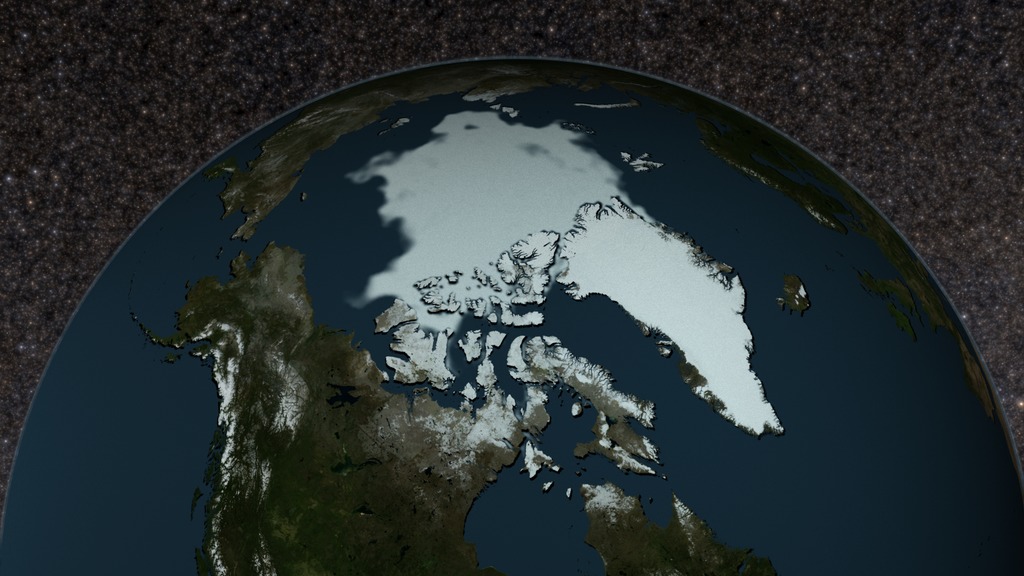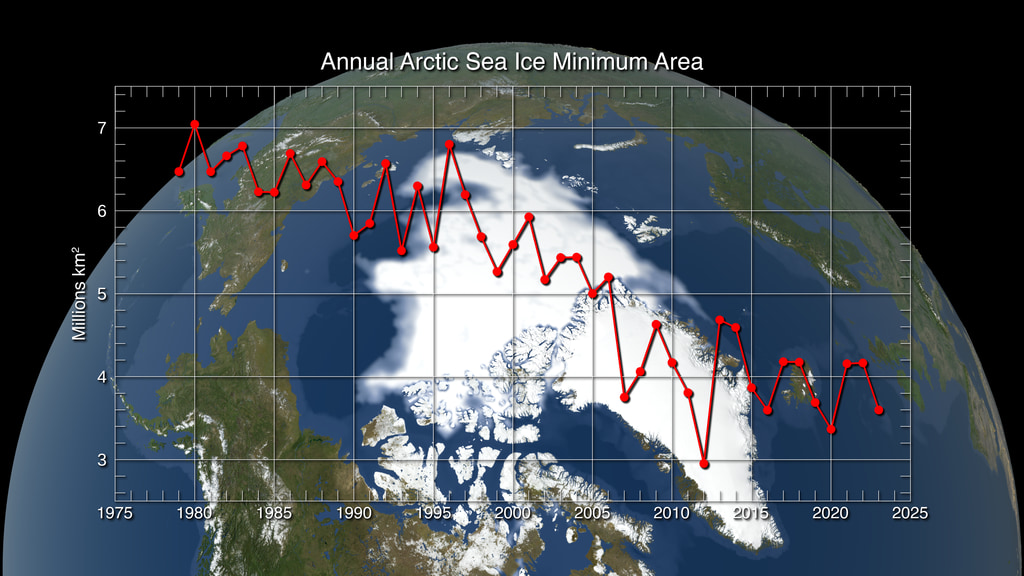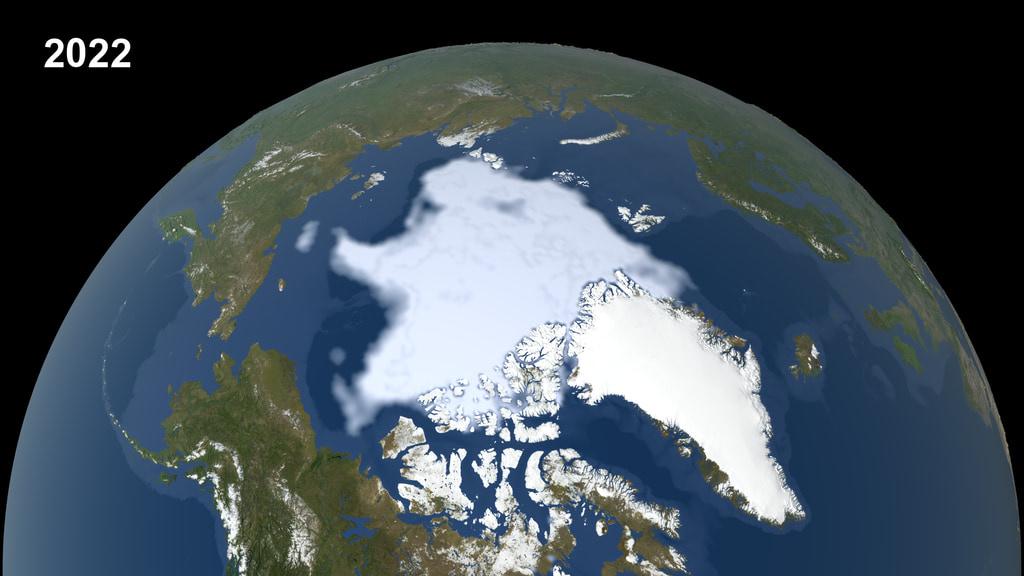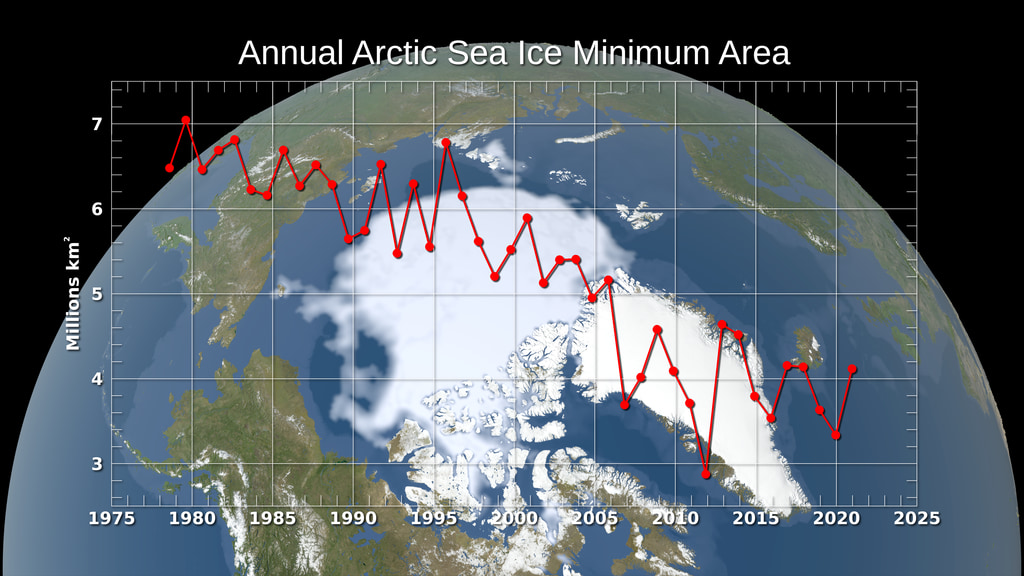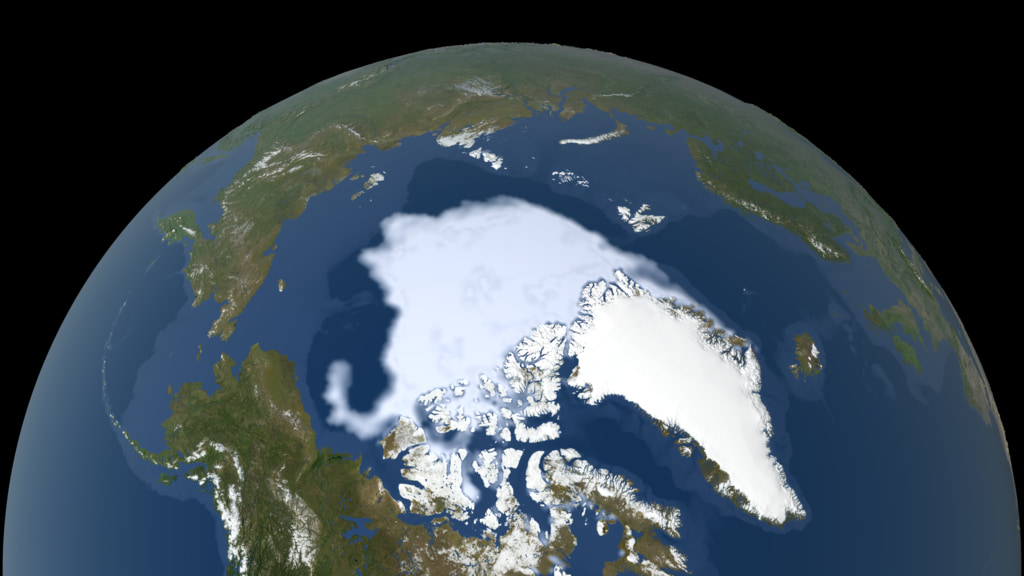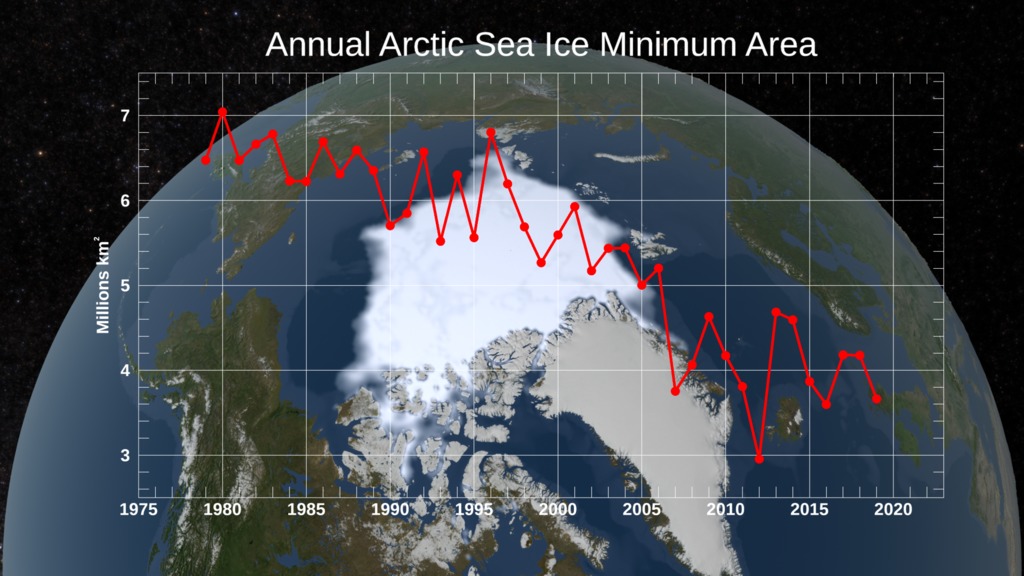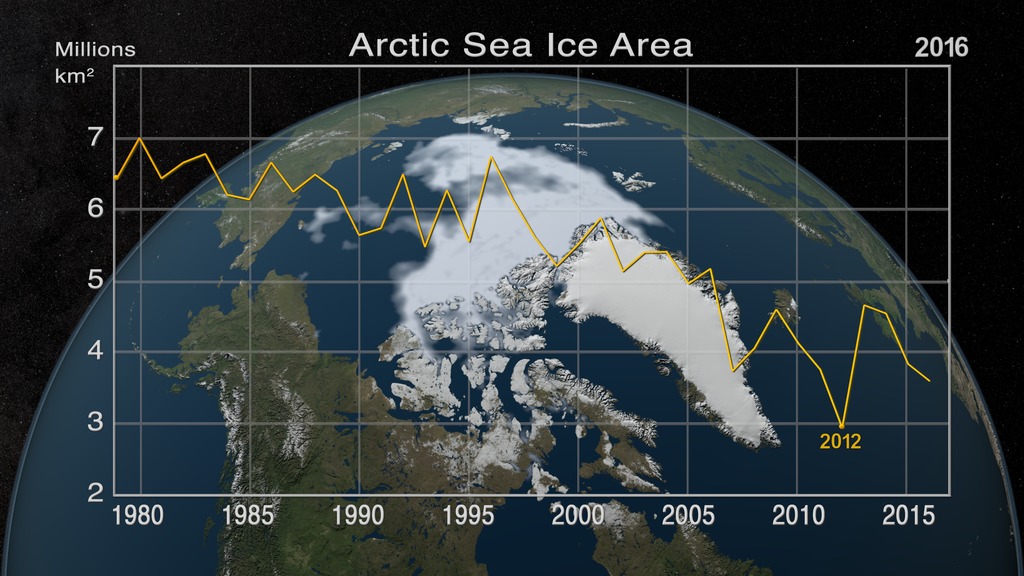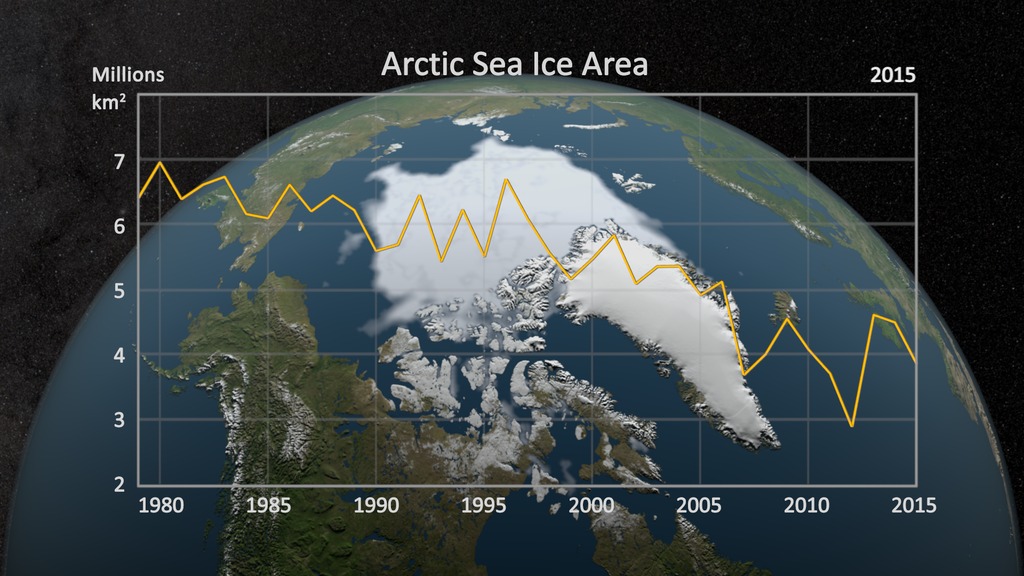A newer version of this visualization is available.
Sea Ice Yearly Minimum 1979-2010 (SSMI data)
The continued significant reduction in the extent of the summer sea ice cover is a dramatic illustration of the pronounced impact increased global temperatures are having on the Arctic regions. There has also been a significant reduction in the relative amount of older, thicker ice. Satellite-based passive microwave images of the sea ice cover have provided a reliable tool for continuously monitoring changes in the extent of the Arctic ice cover since 1979. The ice parameters derived from satellite ice concentration data that are most relevant to climate change studies are sea ice extent and ice area. This visualization shows ice extent in the background and ice area in the foreground. Ice extent is defined here as the integrated sum of the areas of data elements (pixels) with at least 15% ice concentration while ice area is the integrated sum of the products of the area of each pixel and the corresponding ice concentration. Ice extent provides information about how far south (or north) the ice extends in winter and how far north (or south) it retreats toward the continent in the summer while the ice area provides the total area actually covered by sea ice which is useful for estimating the total volume and therefore mass, given the average ice thickness. For more information about these ice datasets, see The Journal of Geophysical Research VOL. 113, C02S07, doi:10.1029/2007JC004257, 2008
In 2007, Arctic summer sea ice reached its lowest extent on record - nearly 25% less than the previous low set in 2005. At the end of each summer, the sea ice cover reaches its minimum extent and what is left is what is called the perennial ice cover which consists mainly of thick multi-year ice flows. The area of the perennial ice has been steadily decreasing since the satellite record began in 1979, at a rate of about 10% per decade.
This visualization shows the annual Arctic sea ice minimum from 1979 to 2010. A graph is overlaid that shows the area in million square kilometers for each year's minimum day. The 1979, 2007, and 2010 data points are highlighted on the graph.
Annual Arctic Sea Ice Minimum from 1979 to 2010 with the first dataset, the current dataset, and the lowest dataset highlighted.
Annual Arctic Sea Ice Minimum from 1979 to 2010 with all
data represented uniformly on the graph overlay.
Minimum Annual Sea Ice Sequence from 1979 through 2010 without any overlay.
Overlay sequence: highlighted graph showing annual trend from 1979 to 2010.
Overlay sequence: plain graph showing annual trend from 1979 to 2010.

September 6, 2009 : Arctic sea ice minimum area for 2009

September 17, 2010 : Arctic sea ice minimum area for 2010
Credits
Please give credit for this item to:
NASA/Goddard Space Flight Center Scientific Visualization Studio
Thanks to Rob Gerston (GSFC) for providing the data.
-
Animators
- Lori Perkins (NASA/GSFC)
- Greg Shirah (NASA/GSFC)
-
Scientist
- Josefino Comiso (NASA/GSFC)
-
Project support
- Robert Gersten (RSIS)
Release date
This page was originally published on Friday, November 12, 2010.
This page was last updated on Wednesday, May 3, 2023 at 1:53 PM EDT.
Series
This visualization can be found in the following series:Datasets used in this visualization
-
[DMSP: SSM/I]
ID: 11Defense Meteorological Satellite Program Special Sensor Microwave Imager
See all pages that use this dataset -
Comiso's September Minimum Sea Ice Concentration
ID: 540
Note: While we identify the data sets used in these visualizations, we do not store any further details, nor the data sets themselves on our site.
